The skills acquired by the ‘master seedstock breeder’ will continue to play a vital role in genetic improvement in cattle over the next ten years, but new and emerging decision-support tools will allow him or her to make better, more informed and more efficient breeding decisions.
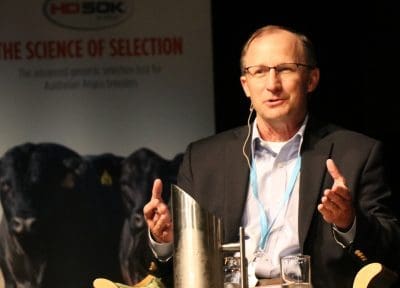
Kent Anderson, director of technical services with Zoetis Animal Genetics
That’s the view Dr Kent Anderson, director of technical services with Zoetis Animal Genetics, who spoke at last week’s Angus Through the Ages conference in Albury.
The noted US animal geneticist was tasked with doing some crystal-ball gazing about where cattle genetics and genomics progress might head over the next ten years, to 2030. Here’s a summary of his views:
Blockchain
Dr Anderson said conference delegates had no doubt started to see the headlines about how the use of blockchain technology is integrating all sorts of food supply chains, where an animal’s information enters an electronic ledger, and then different people along the supply chain can extract information from the ledger, as well as contribute information.
“While that may seem far-fetched today, by 2030 I would image we will have a lot of these beef supply chains up and operational using blockchain, including back at the seedstock level,” he said.
The beef industry was moving from a time when we were a segmented supply chain that included seedstock, cow/calf, stocker or backgrounder, lotfeeder, packer, distributor, retailer and consumer. Today the chain is much more streamlined, more united and more willing to share and use information (including genetics) to make the whole chain more efficient.
Genetic opportunities:
Dr Anderson congratulated Angus Australia for its implementation of single step DNA analysts, the ‘state-of-the-art’ way to blend all of the information including pedigree, phenotype as well as genomic information, driving accuracy for young non-parent animals.
“It means EBVs are more dependable, and there’s less risk and fewer mistakes in selection and mating decisions.
“When a producer asks us what the benefits are of selling or buying bulls that have been genomically-tested, we use progeny equivalents to attempt to answer the question,” he said.
Dr Anderson made a comparison with conventional, non-genomic enhanced genetic evaluation, in how many offspring (daughters or carcases) would otherwise be required to achieve the same level of accuracy as what genomics was delivering immediately.
As this table shows, for most traits across material, growth, efficiency and carcase, the progeny equivalents – the additional accuracy that the marker provides – jump-starts the EBV such that it has accuracy similar to what otherwise would require the better part of a first calf crop with phenotypes contributing to the evaluation, he said.
“The question is, by 2030, what might be the progeny equivalence and how accurate might animals get? This is is obviously dependent on the rate of adoption of the technology and the submission of additional phenotypes, and the assembly of markers that are all the more informative.
“It’s really been this whole notion of achieving the better part of a calf-crop in progeny equivalence that has driven the adoption of genomic technology in the US,” Dr Anderson said.
Currently across the different beef breeds in use in the US there were about 800,000 animals with genotype information, and obviously Angus was leading the way with more than 540,000, distributed among animals located nationwide.
Thinking differently about accuracy
Dr Anderson suggested that by 2030, seedstock breeders might think ‘differently’ about accuracy.
“Will accuracy matter, because young, tested animals will have effectively ‘high’ accuracy – reducing generation interval,” he said.
‘Currently, as a breeder I am one who is moderate in my tolerance towards accuracy, meaning I would normally pick a combination of bulls that are proven – and then maybe a few that are not yet proven for carcase and daughter traits, but are proven for calving ease and growth.
“In 2030, I think the aspiration that we should all have as breeders and breed associations would be to have our technology deliver effectively high-accuracy for non-parent animals – whereby accuracy may not matter so much.”
As a precursor to this, he used the US dairy industry as an example.
The average age of AI sires in the latest 2018 crop of Holstein bulls was one-third younger than it was just six years ago.
“So the dairy industry is obviously using a lot more young, genetically-elite sires earlier – decreasing the generational interval, and speeding genetic progress. They are doing that through more accurate predictions on young, superior animals,” he said.
Additional trait predictions
Dr Anderson also touched on predictions for additional traits that might be needed in 2030 to best describe difference in the profitability of animals – a topic covered in some detail in Dr Dorian Garrick’s earlier conference presentation.
He categorised these into three categories:
- Health Events: Respiratory disease, heart failures (late-term feedlot deaths); Scours, Pinkeye, Foot-rot, etc; Survival – birth to weaning, yearling, harvest
- Maternal Fitness/Adaptability: Fertility/Longevity, teat/udder quality, cow body condition score; Maternal behaviour (mothering at time of calving), calf vigour; Environmental tolerances (Altitude (PAP), Brisket disease, fescue, heat/humidity (hair shedding scores), cold, etc.
- Bull durability & specific complementarity: Probability of survival/service through “X” breeding seasons; Reasons for premature death/culling (i.e. failed semen test, structural soundness.)
“We think there is opportunity to evaluate animals for more maternal fitness and adaptability across a wide variety of traits,” he said.
Another category of traits – “open ground, yet to be ploughed,” – was the notion of being able to select for the do-ability of bulls, to last for more breeding seasons and produce a lot of calves, and not break down over structural or semen quality issues.
“I would challenge you, as breeders, to add to this list pf possible traits. You no doubt have observed things over the years that are important – so by all means engage with your breed association to scope those new traits, that you can collect in volume to give you more insights to the traits that might better describe your profit function.”
Respiratory disease resistance
Of all the traits highlighted above, respiratory (BRD) was the highest on the priority list, Dr Anderson said.
He said he had ‘real confidence’ that the whole idea of selecting cattle for immunity was going to work for the beef industry. “I’m delighted to hear of the investment that Angus Australia has made in this sort of work in Angus cattle.”
He showed results from a validation study for calf wellness traits in susceptibility to respiratory disease in dairy animals. “Although only lowly heritable, these things really do respond to selection, and are associated with observed phenotypes for the traits.”
In the dairy example used to illustrate his point (graph below), the group of animals with the worst genetic merit for susceptibility to respiratory disease also had the highest incidence of BRD. Conversely, the highest genetic merit animals for BRD resistance had the lowest incidence of disease.
“We see results like this over and over again across all of the cow and calf wellness traits – and we’re excited about the prospects,” Dr Anderson said.
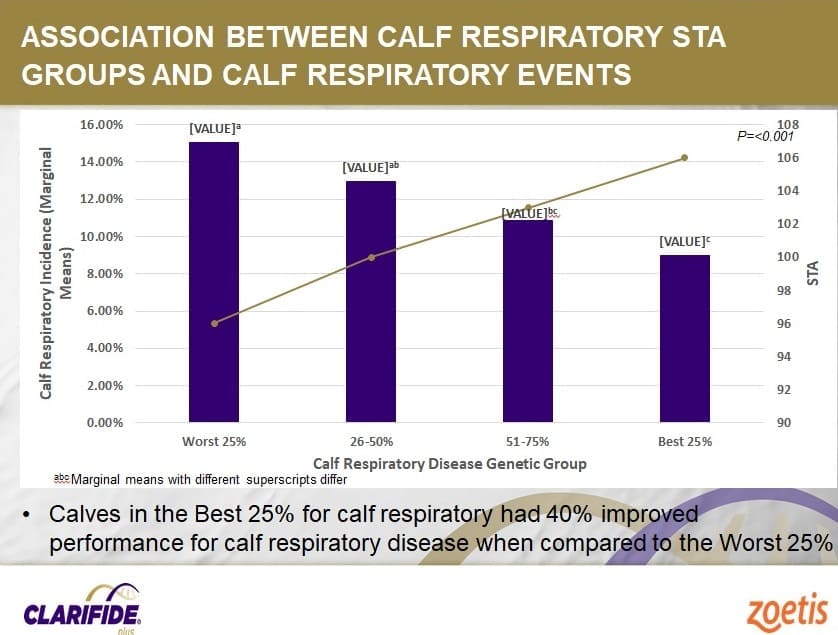
Another feature that was helping rapid genetic progress in the US dairy industry was the sheer quantity of data. The number of genotyped dairy animals now approached three million head.
“As it relates to the economic profit function, the dairy industry has turned around the negative response in reproduction in recent years, and has now sustained improvement in profit,” he said.
Precision animal management
Dr Anderson said by the year 2030, new technologies that were just now coming on line would make the collection of animal phenotypes more automated, and make the submission more streamined
“We’re working with a technology called SmartBow in dairy, and another called Advex applied to feeder cattle in feedlots, whereby an RFID eartag monitors all kinds of things about the animal. They can tell the duration of rumination, the duration of eating at the bunk; and which dairy animals are in heat.
“Our forecast is that we are moving, within a very short time period to what we call precision animal management. The parallel would be precision farming, where you marry-up GPS with soil maps, plant population and tailored fertiliser programs. We see the same thing coming down the turnpike for both dairy and beef cattle.”
Some other interesting developments were already emerging in dairy cattle.
“The dairy industry is getting very sophisticated in the way it manages its cow inventory. Using the industry’s Dairy Wellness Profit Dollars index, where animals are ranked according to their profitability (including both wellness and production traits – see graph below), the industry is getting very sophisticated. Sexed heifer semen is used to produce genetically elite females for replacement, using the top end of their cows. And then – so as not to produce a lower genetic value dairy animal – they are strategically mating the bottom portion of their distribution to beef sires, to make them more valuable as a beef x dairy feeder animal.”
“We’re moving to the point now where the major US studs are selling more beef semen into the dairy industry than they are into beef herds. We think that’s an opportunity into the future to enhance efficiency across the whole beef/dairy supply chain,” Dr Anderson said.
Basic science investment still needed
Dr Anderson said he also thought that some basic science investment was needed to pave the way to 2030.
In 2018, Zoetis invested in developing a whole reference genome – a complete DNA sequence – of an Angus animal. Previously many of the DNA markers were derived from a mixed breed research animal from Montana.
“One thing that has paved the way for wellness traits in dairy industry has been developing a Holstein complete DNA sequence,” he said. “{We’re hopeful that completing that for Angus will be insightful for beef, as well, as we develop predictions for new, difficult, expensive and hard to measure traits in the future.”
Decision support tools
Beyond the actual predictions and the expansion of traits for which we might have predictions in 2030, Dr Anderson suggested that the way in which the industry used the predictions was also likely to become more sophisticated – even though breeders only have two things at their disposal to improve the profitability of animals: selection and mating.
“I think we will see decision-support tools that enable us to optimise these things, and help the master breeder make those decisions better and more efficiently.
“I’d challenge breeders to think about what are those things are that they can select for that are truly going to maximise their profit function between now and 2030, and beyond.
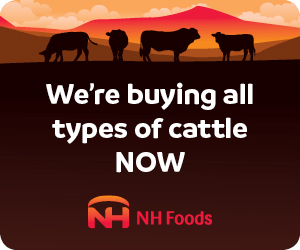 “Hats off to Angus Australia for the work they have done on multi-trait economic selection indexes. I think these are a saviour in trying to take a lot of information on a lot of different traits – and the economic ramifications they contain on costs as well as revenue from production – and putting them into one number that can be used as a screening tool for animals that represent the best profit function.”
“Hats off to Angus Australia for the work they have done on multi-trait economic selection indexes. I think these are a saviour in trying to take a lot of information on a lot of different traits – and the economic ramifications they contain on costs as well as revenue from production – and putting them into one number that can be used as a screening tool for animals that represent the best profit function.”
“Beyond the indexes you have the individual traits you can fall back on to select those particular sires for propagation in your program to help both with the overall profit function, as well as improving individual trait weakness.”
“One of the components of the MateCell software is to work with breeders to really nail down their desired breeding objective, defining which index best represents the profit function for the breeder and their customers; what levels of inbreeding are tolerable; and what threshold levels of individual traits are of most value.
“Answering those questions, and marrying it up with the MateCell software really helps breeders to optimise that blend between the profit function described by the index, tolerable levels of inbreeding and desired levels of individual trait performance.
“I only see the future between now and 2030 as becoming more and more dependent on the use of decision support technology like this – because of the vast array of information we have to try to digest in our selection decisions.”
“Just 200 cows potentially mated to 15 candidate sires means that there is 3000 different possible outcomes to evaluate. It’s not at all that we are trying to threaten or take away the work of the ‘master breeder’ on both visually evaluated traits as well as those things that are just synergistic in the bulls we choose, but these tools simply help us become more efficient, because they will give us the sire that is the most optimum, as well as the ranked back-ups, so we have that at our disposal to think about as we build our breeding plans and make our final sire selection decisions.”
By 2030, the industry would also become more sophisticated in the way it delivered genetic information to commercial users of Angus genetics, and how knowledge from decision-making tools like HeiferSelect in turn would inform ‘wiser, smarter’ bull buying decisions from seedstock providers, Dr Anderson said.
“Imagine the day when your biggest commercial bull customers know all about the strengths and weaknesses of their cow inventory. They could come to you, and running Matecell with all the bulls in your sale catalogue, you could provide them with a prioritised list of those that are the best complement – that best synergised with the strengths, and corrected any weaknesses in that commercial herd, and make the best bull buying decisions possible.”
By 2030, it was also possible that phenotypes from tested commercial herds might contribute to genetic evaluation, especially for traits like reproductive traits, he said.

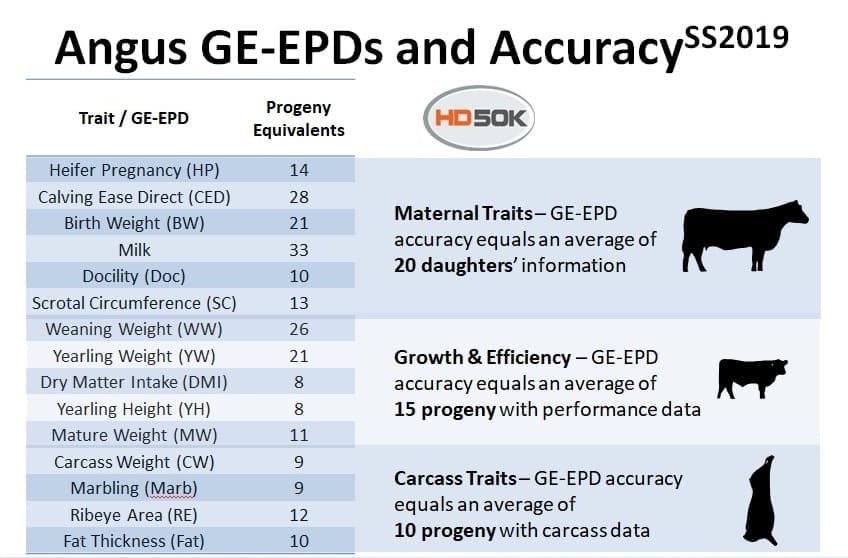
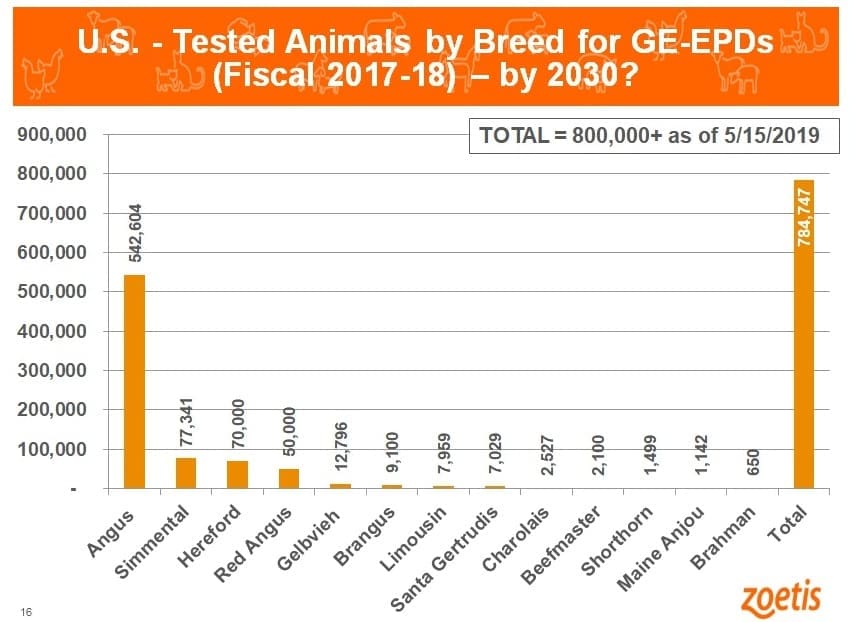
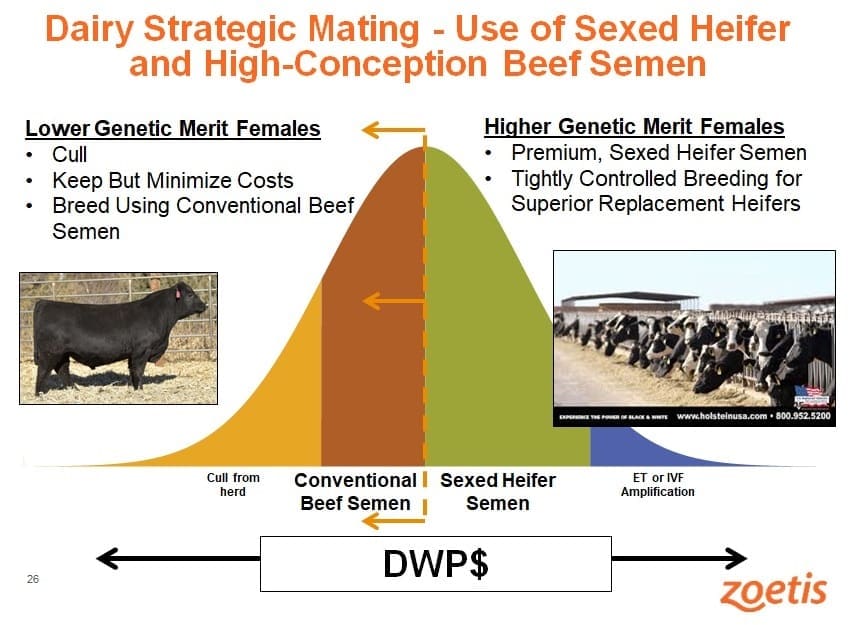


Can I have a copy of this paper